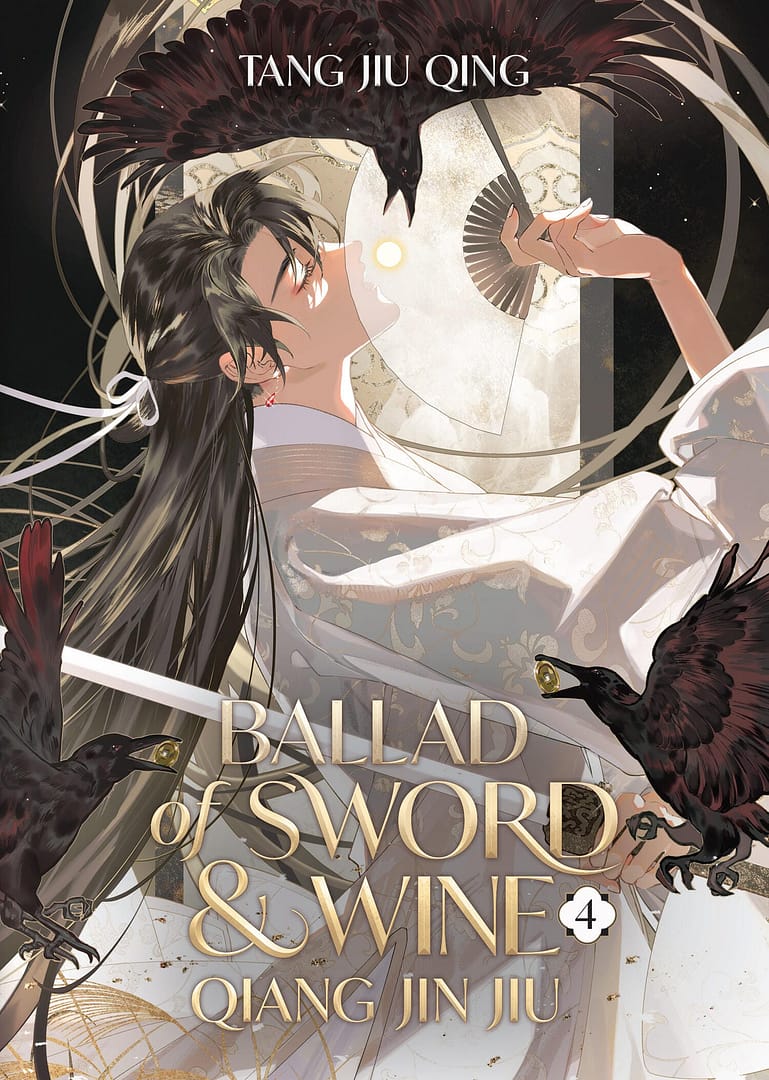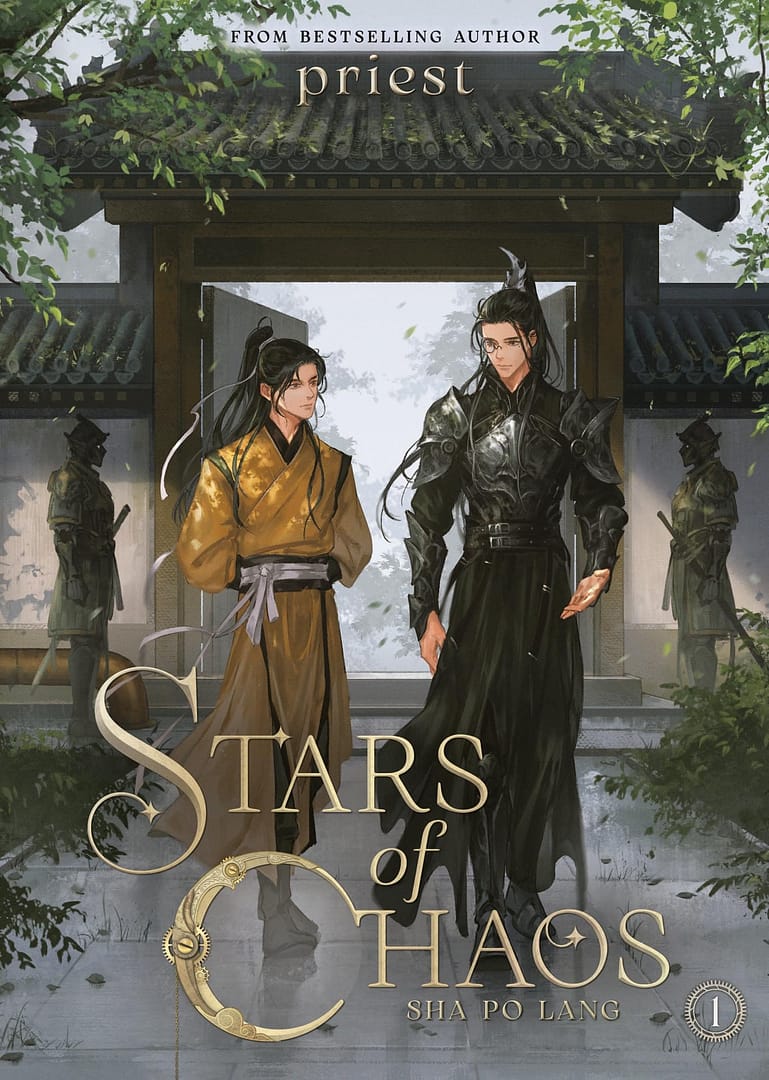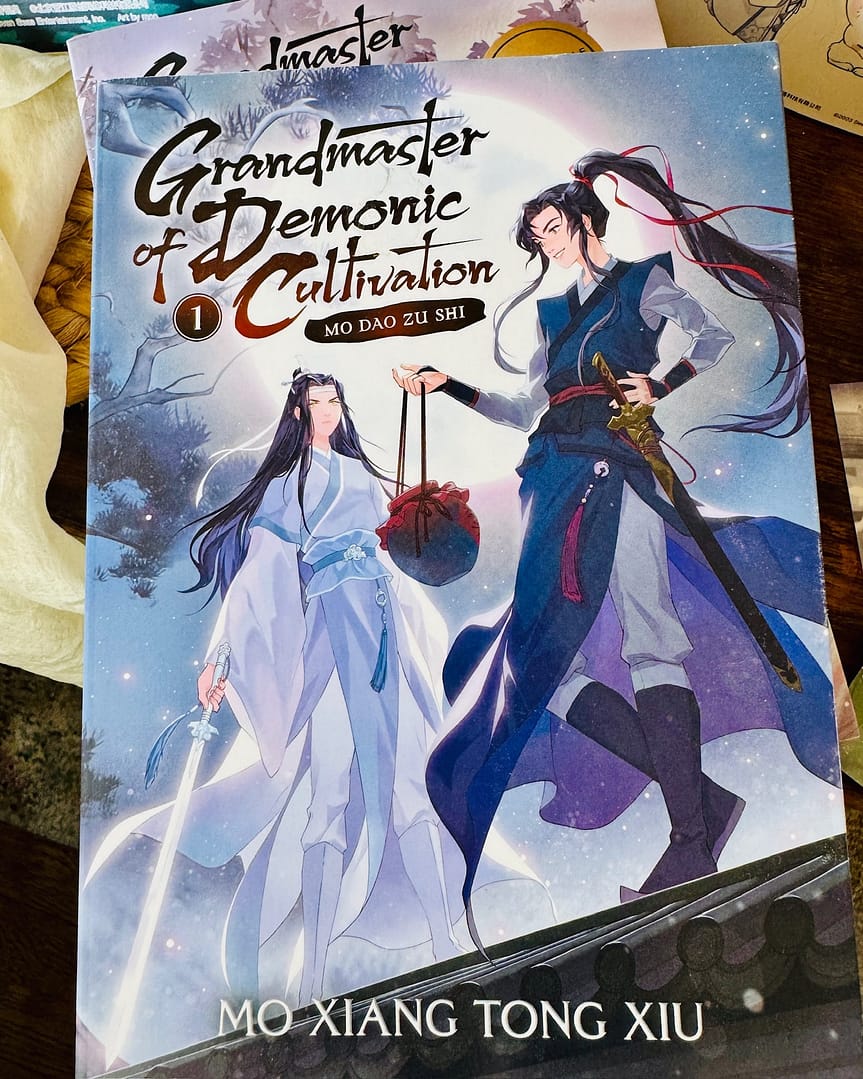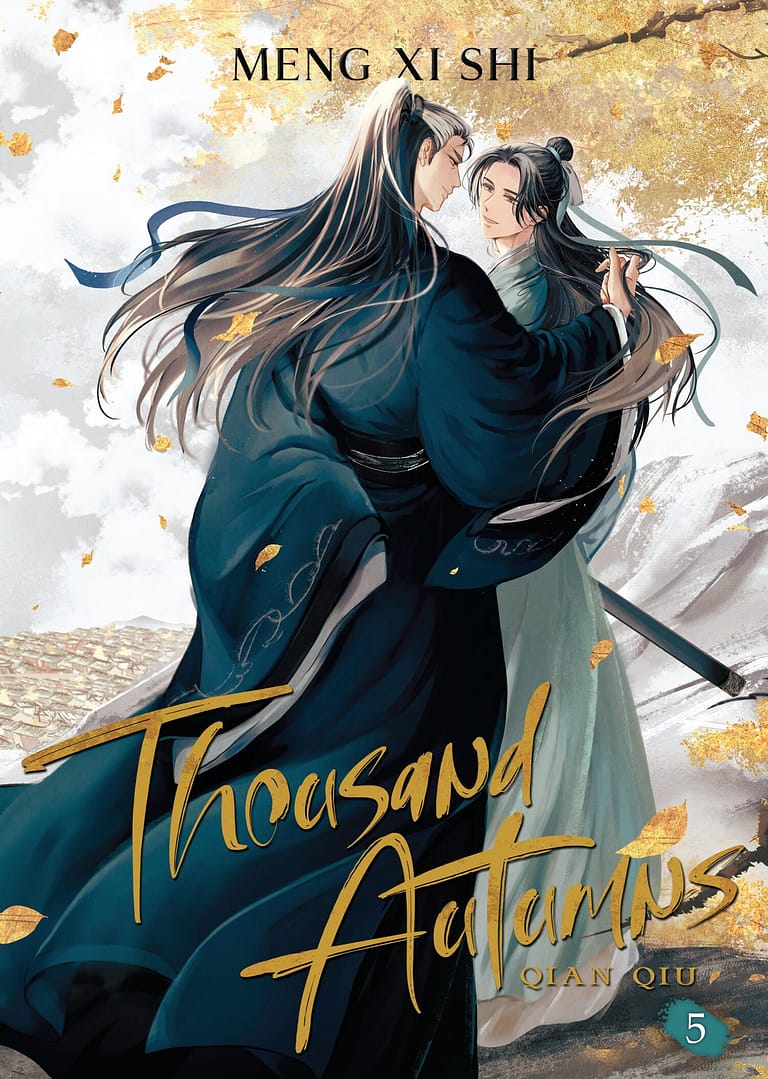Heaven Official’s Blessing (Tian Guan Ci Fu) Danmei Novel Review

This is a review for Heaven Official’s Blessing (天官賜福) by Mò Xiāng Tóngxiù (墨香铜臭). This novel is available fully licensed in English from Seven Seas, which can be bought through the Danmei Dreams affiliate bookshop.org link or anywhere you can buy Seven Seas novels. The summary of the book from the publisher is: Born the crown prince of a prosperous kingdom, Xie Lian was renowned for his beauty, strength, and purity. His years of dedicated study and noble deeds allowed him to ascend to godhood. But those who rise may also fall, and fall he does–cast from the heavens and banished to the world below.
Eight hundred years after his mortal life, Xie Lian has ascended to godhood for the third time, angering most of the gods in the process. To repay his debts, he is sent to the Mortal Realm to hunt down violent ghosts and troublemaking spirits who prey on the living. Along his travels, he meets the fascinating and brilliant San Lang, a young man with whom he feels an instant connection. Yet San Lang is clearly more than he appears… What mysteries lie behind that carefree smile?
Please note that all reviews aim to be spoiler-free, while analyses often contain spoilers.
Summary
This novel was my introduction to danmei, as it has been for many people, and it catapulted me head-over-heels into love with the genre. I re-read it recently with some trepidation, worried it wouldn’t hold up as well after I’d read so many other danmei novels. To my delight, it was just as good—perhaps even better—on re-read. So many of the early interactions between characters take on more resonance with the understanding that comes from the unfolding plot. If you haven’t read it once yet, I highly recommend it. The characters are complex and multi-faceted, the plot unwinds slowly to reveal a master tapestry of complex interrelated conditions, and the romance is absolutely breathtaking.
Romance and Main Characters
Our two main leads, Xie Lian and Hua Cheng, are fascinatingly complex. Though the novel begins in media res and never really lets up, through the back stories we slowly start to understand the layers beyond the relatively simple exteriors of these characters. They may feel a little tropey at first, but in the end they are anything but. Or, given the popularity of this novel, I suppose you could say that they’re probably trope-defining unto themselves.

The romance itself is, well, absolutely breathtaking. The obstacles these two characters face in being together have at times been externally-driven, but by the time they meet in this novel it is a lot more about how they build trust with one another, live out their own values, and find solace together. Some of the emotional hurdles they’re overcoming aren’t spelled out until the second half of the novel, but once they are you’ll want to re-read the story again to see their blossoming love in a new light.
Secondary Characters
When deciding whether or not to buy this novel originally, I recall reading a review somewhere that talked about the side characters being fully fleshed out. Thank you to that anonymous reviewer that I’ve long since lost track of—you were correct. That’s one of the beauties about a genre with such long novels—there is a ton of opportunity to give compelling backstories to many characters, and this novel plays further with this idea by populating it with semi-immortal gods and ghosts.
The side characters have personalities, backstories, temperaments and challenges to overcome themselves. This takes them in and out of the orbit of the two main characters, and over the course of the novel we see characters who seemed two-dimensional become rounded out in surprising ways. Their growth feels natural and organic to who they are, perhaps especially through the lens of their very long lives.
Plot
What starts out feeling like a monster-of-the-week narrative quickly transforms into a non-stop journey of discovery propelled forward by an unseen antagonist. The plot meanders at time, but is never off-course. There are several longer flashback arcs that I know readers sometimes struggle with, and even during my re-read I had to brace myself for those. But they are well-written and add critical information at key moments in the plot. Mo Xiang Tong Xiu does an excellent job bookmarking these sections with lighter-touch romantic moments as well.
Worldbuilding
Mo Xiang Tong Xiu builds a world of gods and ghosts that is based on traditional Chinese mythology but also departs from it in many key ways. The underlying logistics of this world hold together, though there are surprises around many corners. The lives of mortals are often foils for the gods, but this feels very appropriate for a set of conceited and fallible immortals. Not entirely dissimilar to some modern Olympus retellings in terms of disregard for human consideration. This is all the more relatable when we see how Xie Lian also struggles with the same, and later when we learn more about why the cosmology exists the way it does.
Writing Style & Translation
The writing style is the one place where I’ve docked a star, and that’s primarily focused on the first half of the first volume of the English translation. It does feel like Mo Xiang Tong Xiu takes a little while to settle on a writing style that feels easy enough to read but also congruent with the formality of the pantheon. Eventually it mostly settles, though every now and then in later volumes I still was pulled out of an otherwise-immersive reading experience by the modernity and informality of some of the language. I believe this to be Mo Xiang Tong Xiu’s stylistic choices and not the fault of the official translators, but I haven’t spent enough time with the original Chinese to be certain.
Spice Level
3 peppers. There is no explicit sex on-page, but a lot of references to it happening off-page in the extras and the very end of the novel. In at least one extra, the extra opens right as the intimacy ends. Despite the lack of graphic descriptions, the extras are awfully suggestive in a lovely way.









One Comment